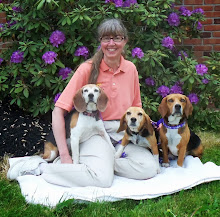I have spent 18 of my 24 years as a veterinarian practicing in rural America. My first job out of veterinary school was in the hills of southwestern Pennsylvania. At that time, the closest referral or surgical practice was a 3 hour drive one way. Most of my clients were farmers or had bluecollar jobs. Needless to say, I did lot more procedures and surgeries as part of my general practitioner duties than I do today. Part of it was youth and that willingness to try anything once that goes along with being young. But most of it was necessity. The time and funds were just not available to my clients to take their animals to a specialist. I did a lot of exploratory surgeries in those days. Sometimes I could fix the problem. Sometimes I couldn't. But many times taking a look inside allowed me to come up with a diagnosis and more important a prognosis.
My next job was in an upscale suburb of a big city. Veterinary specialties were just starting to open up in the area. As a general practitioner, having access to different specialities allowed me to take pet care to the next level. Specialists are able to afford ultrasound machines because of their higher case load. What a great tool for taking a look inside at the internal organs when x-rays do not tell the whole story. Ultrasound is a lot less expensive than exploratory surgery too in most cases. Sometimes surgery is still necessary, but sometimes surgery is not necessary or the prognosis is too poor to do surgery. During these years, I did very few exploratory surgeries. It just wasn't necessary to do as part of a family doctor type practice.
Now for the past 15 years, I am once again practicing in a small rural community. The difference compared to my first job is that there are referral practices only 60-90 minutes away. Ultrasound machines are still out of financial reach for a small town practice, but there are enough larger practices nearby so that as a family doctor, I can refer my patients to get an ultrasound when I have exhausted all of my diagnostic tools. But something changed last year. The economy. While I still give every client the option of going to a surgeon or internist, sometimes it just not financially possible. Once again, I find myself using exploratory abdominal surgery as a diagnostic tool. And it is a great diagnostic tool. There is nothing like being able to see what the problem is close up. And just like 24 years ago, sometimes I am able to fix the problem and sometimes I am not. Cancer is a common diagnosis in older dogs. But even cancers can sometimes be cured with surgery. Let me share with you a couple of tumors I removed during exploratory surgery over the past month.
First up is Jake. Jake is a 13 year old Border Collie that came in because he was sick. X-rays  showed an abdominal mass. The mass was located on the small intestine and was able to be removed. It is a very slow growing cancer. There is only a very small chance the cancer will return. What is most important is that Jake is feeling back to his own self. Here is a picture of Jake's tumor taken out at surgery:
showed an abdominal mass. The mass was located on the small intestine and was able to be removed. It is a very slow growing cancer. There is only a very small chance the cancer will return. What is most important is that Jake is feeling back to his own self. Here is a picture of Jake's tumor taken out at surgery:
 showed an abdominal mass. The mass was located on the small intestine and was able to be removed. It is a very slow growing cancer. There is only a very small chance the cancer will return. What is most important is that Jake is feeling back to his own self. Here is a picture of Jake's tumor taken out at surgery:
showed an abdominal mass. The mass was located on the small intestine and was able to be removed. It is a very slow growing cancer. There is only a very small chance the cancer will return. What is most important is that Jake is feeling back to his own self. Here is a picture of Jake's tumor taken out at surgery: Next is Bailey. Bailey is an 11 year old SharPei mix that also came in because she was not feeling well. She had a big mass in her abdomen that I could feel during her physical exam. The mass turned out to be on her spleen so I removed her spleen. Here is Bailey's spleen and mass:
Bailey's mass turned out to be benign and she should have an excellent prognosis. Here's another picture of Bailey right when she was moved into recovery after surgery:
So here I am, 24 years after starting my career, doing things like I did at the beginning. What is that old saying? The more things change, the more they stay the same. Seems like veterinary medicine is the same way.










The best Vets I have ever found are the vets that take more time with the dog and less time with the tests.
ReplyDeleteTests are important of course but I have seen vets that thoroughly examine the dog blow tests out of the water.
Example: We had a Katrina rescue that became ill about 5 months after he arrived. It was our first rescue and at the time we did not have a vet so we took one out of the yellow pages.
His practise was very busy and he was an older Dr. so we felt very good with his experience.
Long story short after a barium x-ray of Sandy's stomach the Dr showed us a very large tumour in Sandy's stomach on the x-ray.
However it did not look like a tumour to me. (But what do I know, im no doctor).
See we called a vet that works with lots of rescues Dr Karen Dashfield. She was one of the rescue people with SARS dogs at the world trade after 9/11).She is really great.
She came to our place and without tests and just looking at the dog found he had a malignant tumour in the throat and nothing wrong with his stomach.
We sent Sandy to the emergency hospital but it was too late, the tumour covered too much of the pallet and could not be removed.
The story does not have a good ending but the point is every doctor that has spent time watching and examining and probing our pets sees things that are just not always clear on tests.
You are a very good Doctor and your patients are damn lucky to have you.